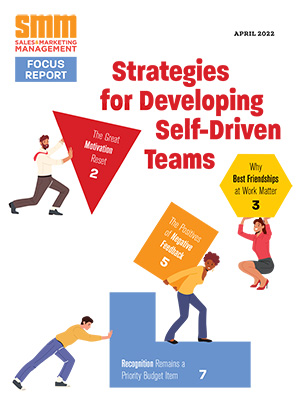Companies use non-cash incentives to drive performance in a way they don’t believe cash can. An additional benefit of these programs that should not be slighted is the enhanced relationship between employees and the employer. Scott Jeffrey, a professor of management and decision sciences at Monmouth University in New Jersey refers to it as “organizational commitment.”
In a research paper written by Jeffrey and published by the Society for Incentive Travel Excellence (SITE), he summarizes three types of employee commitment: continuance, normative and affective.
Continuance commitment is a feeling of being tied to an organization for economic reasons. In other words, needing a paycheck. Jeffrey says it is the weakest form of the three types of commitment. Normative commitment represents a feeling of an obligation to stay, either out of general work ethic or due to some treatment the company provides. Employees stay because they feel they should.
Affective commitment is a desire to stay with the company. There are a number of positive consequences associated with affective commitment that go beyond retention, Jeffrey states. In citing other research, he emphasizes that “employees with high levels of affective organizational commitment will engage in what are known as ‘citizenship behaviors’ – performing above and beyond what is required by the job. The provision of non-cash incentives is an effective way to encourage affective commitment, which will in turn lead to more of this behavior.”
It’s about feeling valued
Researchers have studied a concept they call “Perceived Organizational Support,” which essentially is the degree to which an employee feels valued and appreciated by their organization. Employees who feel appreciated are more affectively committed to an organization. Non-cash incentives have been shown to be better at leading to increased feelings of support for a number of reasons:
• Manager discretion – The behavior that makes employees feel valued needs to be viewed as discretionary. If something is provided because it is required, such as compliance with OSHA regulations for safety, it is not perceived as a sign of being valued. In the same way, cash is viewed by employees as something they are “due” or “entitled to,” says Jeffrey.
• Memory – Non-cash incentives come with physical artifacts that trigger memories of the performance that led to receiving them. This leads to increases in employee commitment, lowers turnover and absenteeism, and increases the provision of behavior “above and beyond” what is required by the job.
• Relationship with management – There is a high correlation between the quality of the relationship with one’s immediate manager and how valued they feel by the organization. Higher quality relationships between employees and managers are viewed as more social, including recognition and mutually beneficial exchanges. The use of non-cash incentives is more likely to be viewed as discretionary and therefore is much more likely to improve the relationship between the employee and manager.
Additional articles on workplace motivation and information about SITE can be found at SITEglobal.com.



